Everything coming in Rainbow Six Siege: Operation Ember Rise, and what it means for the meta
Siege's new grapple hook and explosive shield play with expectations in fascinating ways.
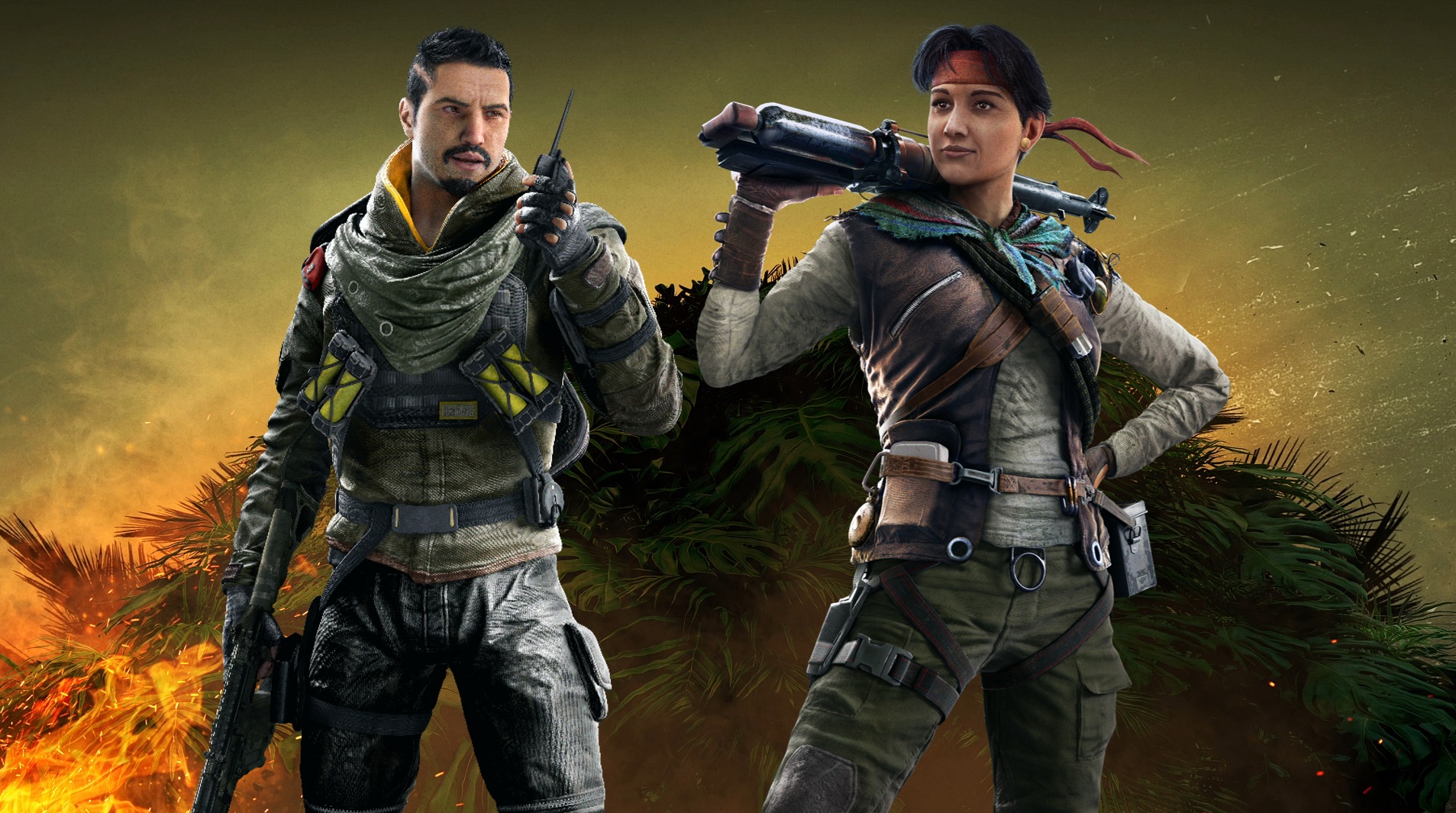
After weeks of leaks and rumors surrounding Rainbow Six Siege’s Operation Ember Rise, Ubisoft has fully unveiled two new operators and a dramatic rework of its strangest map. New attacker Amaru and defender Goyo aren’t upending Siege’s meta, but they bring along two gadgets that play against established expectations in fun ways: a window-bursting grapple hook and a deceptively deadly deployable shield.
Amaru
Compared to the often complicated gadgets and rules of new Siege operators, Amaru is simple and intuitive. She’s a two-speed, two-armor attacker equipped with the Garra Hook, a limited-use grapple hook launcher that propels her up to windows or ledges in seconds. Seriously, it’s pretty fast—take a look.
Usually, breaching a window is a process. You run up to a wall, slowly rappel up a rope, and knock out the window manually before vaulting in. Amaru’s hook boils that process down to one click. You designate a destination and just go there, with a few caveats. While the Garra hook gives off serious Apex Legends Pathfinder vibes, you can’t shoot it off anywhere. It has four uses per round and only works on windows, certain ledges, and hatches. It’s purely a mobility gadget, which is a real rarity for Siege.
Amaru seems like a niche pick, but I can already feel unique opportunities as a lone wolf infiltrator. Her speedy infiltration messes with every player’s basic instincts about enemy behavior. While Kapkan is placing traps across the map, confident the attackers are still outside approaching the building, Amaru is already in the next room. She breaks the rules of how fast an attacker can usually get somewhere, and it's bound to catch veterans off guard.
That said, the Garra Hook isn’t a stealthy gadget. If you’re close by, you can clearly hear the launcher reel Amaru in like a trout on a fishing pole. If she tries to simply burst into the objective immediately, the defenders can easily look in her direction and take her down before her feet touch the ground. Amaru is helpless until the entire grapple is complete, so it’s worth it to drone ahead and zip with caution.
One notable counter is, of course, Castle. The Garra Hook won’t penetrate through Castle’s barricades. In fact, it won’t accept a grapple up to the window at all. Amaru can rappel up to the window and place a breaching charge, but that sorta defeats her purpose. Unless assisted by Ash, Zofia, or a frag grenade, Amaru is pretty much locked out by Castle.
The most interesting use of the hook is hatches—Amaru is the first operator who can scale up hatches, not just down. Defenders now have a legitimate reason to reinforce a hatch at their feet, which could shift the established wisdom of how to use the team’s 10 precious reinforcements under the right circumstances. Do we cover this vulnerable wall, or make sure Rico Rodriguez can’t zip up from under our noses? One hatch climber likely won’t make that much of an impact, but it’s a fascinating new precedent for the Siege meta.
The biggest gaming news, reviews and hardware deals
Keep up to date with the most important stories and the best deals, as picked by the PC Gamer team.
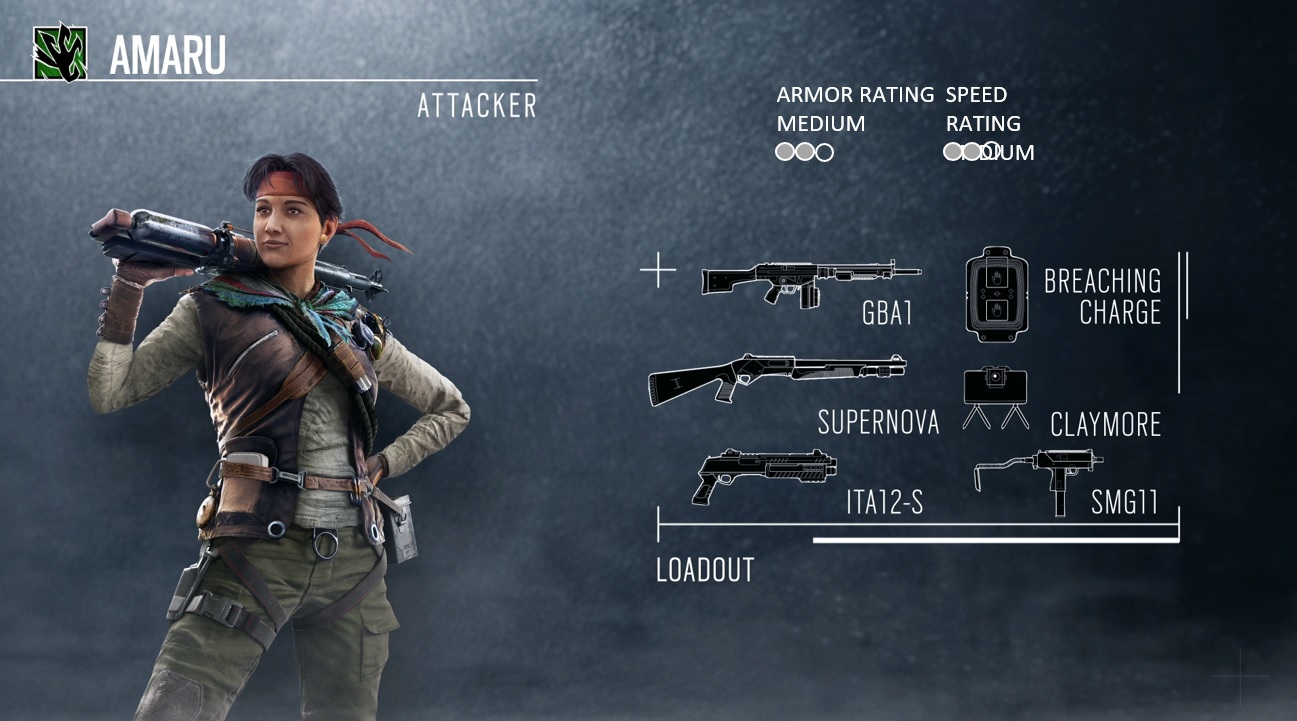
Like with Nøkk and Warden last season, Ubisoft has gone the route of reusing lesser-known weapons for Amaru and Goyo instead of creating new ones (there are now 100 weapons in the game, so I get it). For primary weapons, Amaru takes her pick between the G8A1 LMG (previously exclusive to IQ) and the Hibana/Echo’s Supernova shotgun (which can now equip a suppressor). It’s a non-standard setup noticeably lacking an assault rifle. The G8A1 is a functional primary, but I’ll always prefer the balanced recoil and fire rate of an AR.
Her secondaries are also non-standard—she can take Jackal's ITA12-S shotgun or the British SMG-11. Both secondaries are interesting modifications on her playstyle. The SMG-11 is powerful enough to operate as a de facto primary weapon, meaning she can take the less reliable Supernova and use its silencer for quieter hatch and window breaching. Or, you can take her LMG and still pop hatches with the ITA12-S backup shotgun.
Goyo
It’s been a while since Ubisoft has added a defender as straightforward as Goyo (an objectively hotter clone of John Leguizamo). The two-speed, two-armor defender is equipped with Volcán Shields, deployable shields with a back-mounted explosive charge. The Volcán looks no different from a normal deployable shield from the front, but when destroyed, it explodes and leaves a spread of fire in its wake. His shields can be destroyed with traditional means (Ash, Zofia, Sledge, frag grenades), but defenders can also shoot the red explosive charge to trigger it at will, similar to popping the air canister on Mira’s Black Mirrors.
The initial explosion deals around 30 damage if enemies are close enough, though the Volcán’s true value is the area denial of the fire. Its area of effect is pretty large, especially considering he carries three shields. The fire is similar to Smoke’s gas canisters, but appears to tick damage faster and kill a bit quicker.
The Volcán has the advantage (and possible disadvantage) of being usable by anyone. Once placed, Goyo can leave it up to his team to detonate the shields when the time is right. This is where you can have the most fun synergizing with teammates. Placed in view of Maestro’s Evil Eyes, the Volcán can be detonated by the camera’s laser. Installed on a doorway, the shield combos nicely with Kapkan’s EDD traps. Vaulting over the shield detonates the trap (dealing 60 damage), which detonates the shield (around 30 more damage) followed by fire damage that will likely kill you.
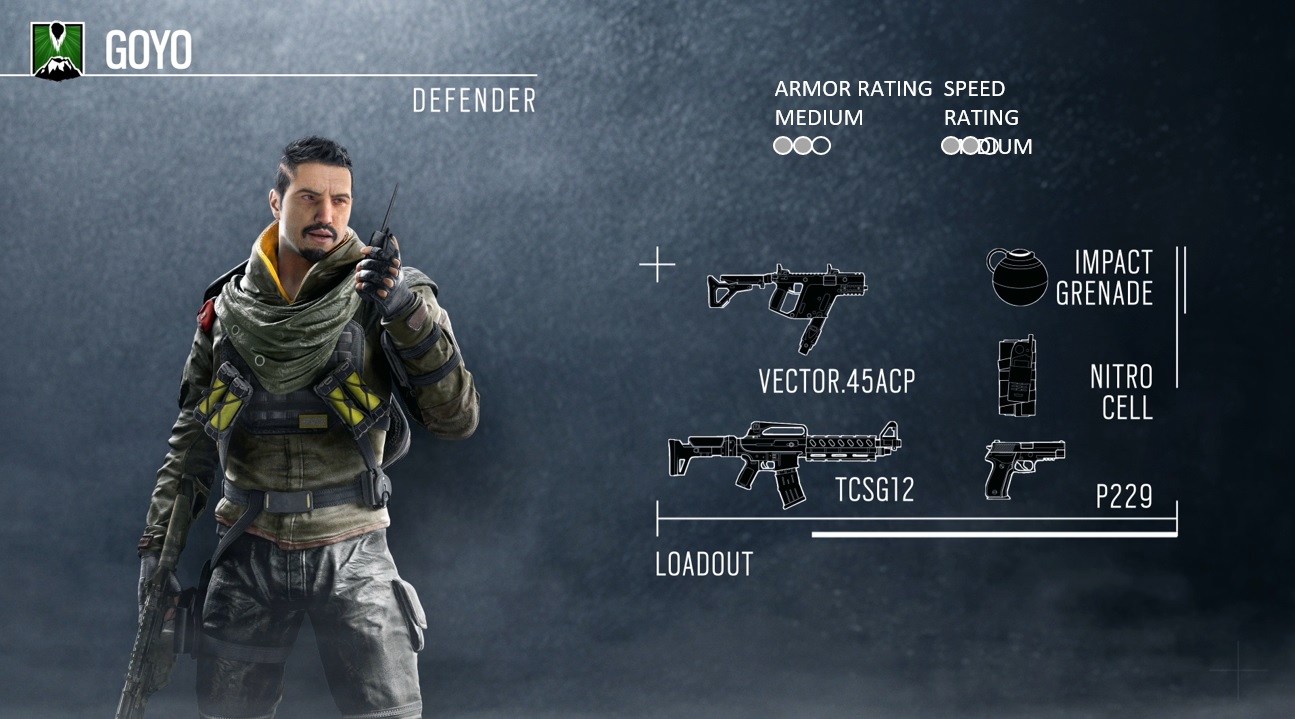
But Goyo’s Volcáns also have the potential to be hijacked by attackers. If an angle is made from above or below, it’s easy to spot the shield’s bright red charge and shoot it when defenders least expect.
There’s a light layer of deception to Goyo’s shields that I find delightful. Like Mario Kart’s traumatizing fake item box, the Volcán only reveals itself as a trap once it’s too late to escape its clutches. The shield is also inherently interactive, which is refreshing for Siege’s mostly hands-off proximity traps. It requires some strategy in placement and deciding when to fire it up. But, its hands-on nature means that it can be useless as often as its deadly. If an attacker sneaks to the objective unnoticed and happens upon a Volcán, they can simply vault over it without consequence.
Goyo’s flexible kit makes me believe he can serve as an anchor or roamer. He can either take the Vector.45 ACP (formerly exclusive to Mira) and the TCSG12 slug shotgun (borrowed from Kaid). The Vector is a very powerful SMG, and it could feel even more so in the hands of a faster operator than Mira. He also has the choice between impact grenades or a nitro cell. Along with his three Volcáns, he’s basically a one-man utility truck of defense gadgets.
Kanal map rework
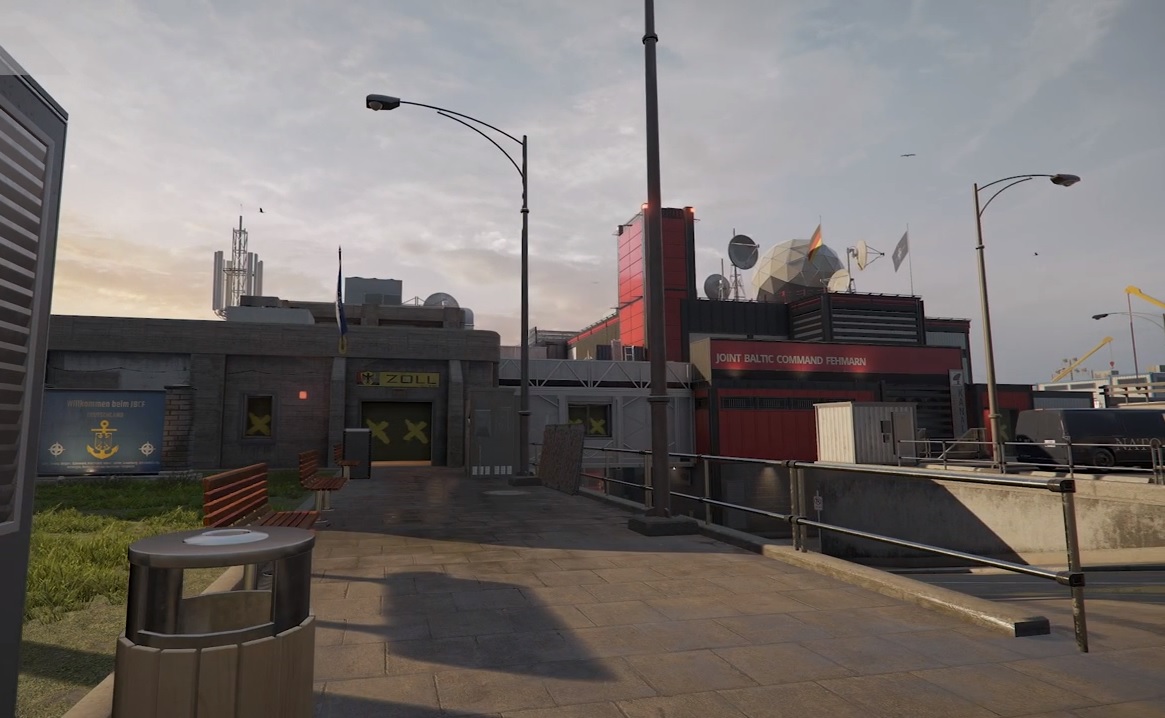
In Ember Rise, Kanal has gotten a huge visual facelift. I’ve been burned by map reworks before, so I was a little nervous to see how Ubisoft was changing one of my favorite casual maps. The brick and stone style of the east air traffic control tower has completely shifted to a modern, sharp steel style with a distinct red paint job. It’s brighter, bolder, sleeker, and seemingly better designed for Siege in 2019.
Old Kanal has some of the busiest interiors with a lot of items to bump into. Several of these rooms (like the west office objective) have all been cleaned up without changing their identity too much. With Hereford Base, it felt like Ubi took a sledgehammer to the whole thing and basically made a new (worse) map. New Kanal isn’t that. It has the lighter touch of Clubhouse’s rework, but with more attention paid to upgrading its aesthetics.
The basic layout of objective sites are mostly the same, but there are some key changes that tackle Kanal’s weaknesses. Most important of all: there’s a new sky bridge on the third floor that gives players another option for crossing between the east and west buildings. This prevents any one path from becoming too much of a choke point while making the third floor objective more interesting. Many of the map’s most exploitative windows have been permanently sealed to cut off enterprising Doc mains from spawn peeking.
Oh, and there's also a gigantic submarine floating just outside the map. That's neat. We won’t know just how good the Kanal rework is until we’ve bent and broken it over a few months, but it gives an amazing first impression.
Other stuff worth knowing
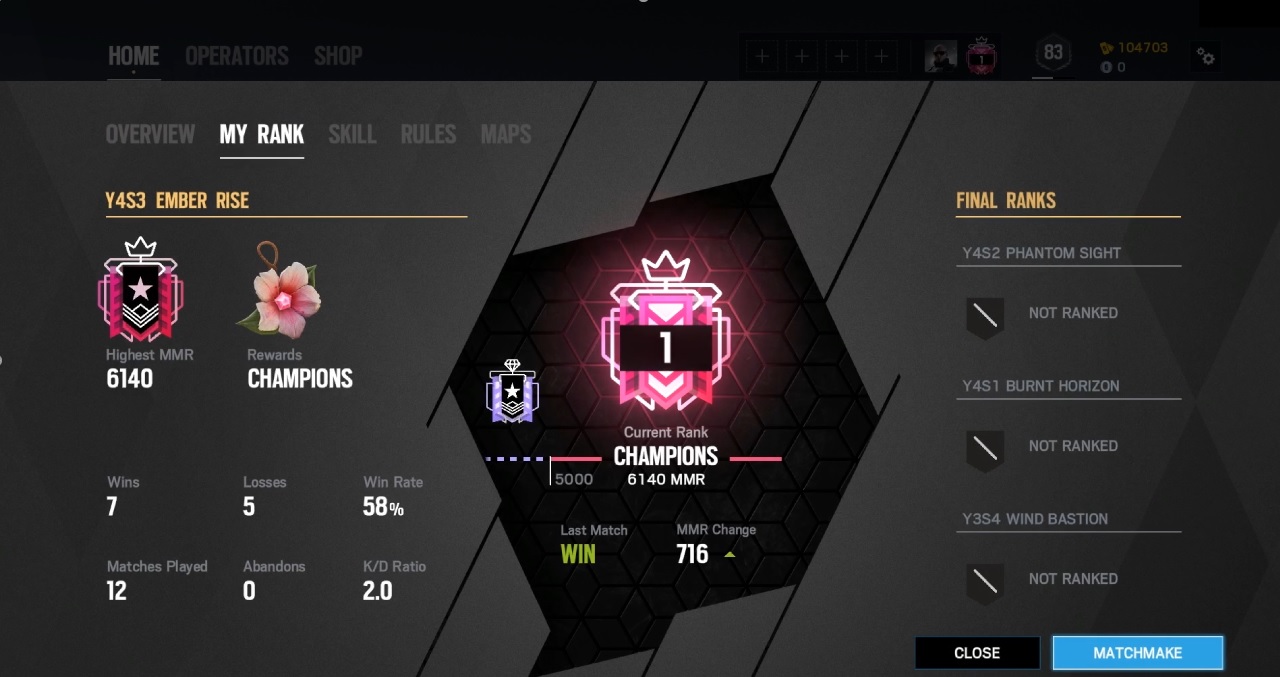
- Rainbow Six Siege is getting an Unranked playlist, which has all the rules of Ranked without the stress of losing MMR.
- Ubi is adding a new, top-tier rank called Champions that goes even beyond Diamond. Champion status starts at 5000 MMR.
- Ranked now has a squad MMR restriction, so some players won’t be able to queue together if their skill is too varied. The goal is to prevent Bronze players from inviting their Diamond friends to carry them in Ranked.
- Theme Park, Fortress, and Hereford Base are out of Ranked, and Kanal is obviously in. This leaves the pool at 12 maps. Season 4’s map rework is Theme Park, so it will likely be added back later in the year.
- Rainbow Six Siege is jumping on the battle pass bandwagon. The program is rolling out in two phases, starting with a free battle pass sometime this season. Read more on that here.

Morgan has been writing for PC Gamer since 2018, first as a freelancer and currently as a staff writer. He has also appeared on Polygon, Kotaku, Fanbyte, and PCGamesN. Before freelancing, he spent most of high school and all of college writing at small gaming sites that didn't pay him. He's very happy to have a real job now. Morgan is a beat writer following the latest and greatest shooters and the communities that play them. He also writes general news, reviews, features, the occasional guide, and bad jokes in Slack. Twist his arm, and he'll even write about a boring strategy game. Please don't, though.

